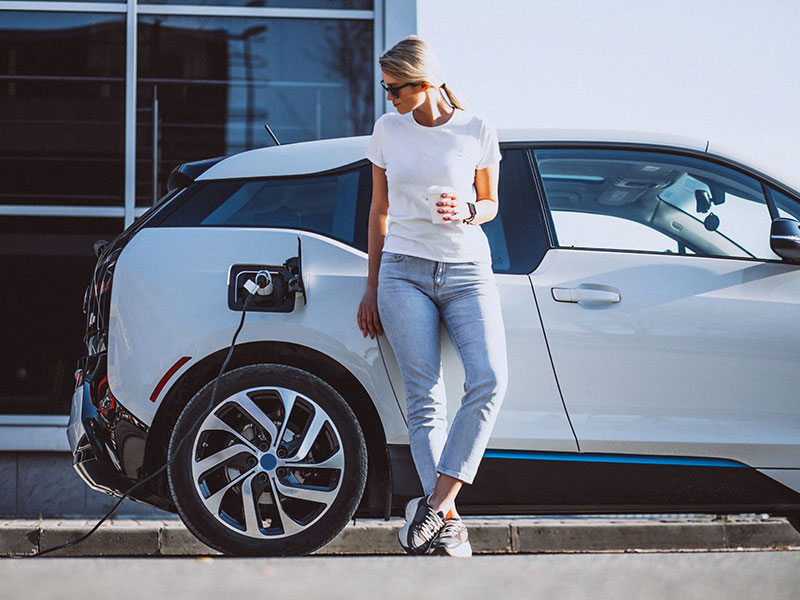3rd December 2020
Range Anxiety – what is it and is it worth worrying about?

Last week the government confirmed the ban on the sale of new petrol and diesel cars and vans is to be brought forward to 2030, meaning many organisations, if they haven’t already, will need to begin to review their fleet and future plans.
So with an increasing number of organisations considering electric vehicles (EVs), attracted by the promise of lower fleet operating costs and the ability to reduce their environmental impact, a number of fleet managers are still being held back from actually making the switch due to range anxiety.
In today’s article we take a look at the fear mongering that has caused the spread of this anxiety and discuss how switching to an EV fleet has never been easier.
What is range anxiety?
Putting it in the simplest terms, range anxiety is worrying that you don’t have enough charge in your vehicle to make it to your destination. It is a feeling similar to that experienced by drivers of conventional ICE vehicles when their fuel warning light comes on. Have you ever wondered if you have enough diesel or petrol to make it to the next fuelling station?
Early electric vehicle range
It’s true that early models of electric vehicles had a poor reputation for their real-world mileage range between charges, with drivers often finding that they couldn’t get much more than 70 miles from a fully charged battery, despite the manufacturers’ claim that a far greater mileage was possible.
This tainted the image of the EV market and to some extent the industry is still trying to shake this off with some drivers fearing that their vehicle’s battery will die mid-trip, leaving them stranded in the middle of nowhere. The truth, however, is that this scenario simply isn’t going to happen.
Sure, if you drive far enough without stopping at an EV charging point/station, your vehicle will run out of charge but the same goes with a petrol or diesel powered vehicle – it risks running out of fuel if you don’t stop to fill up when the fuel tank is low.
There have been significant advancements in EV technology since the early days; with the average range of electric vehicles now having increased considerably. Some models now offer a range of 348 miles which is the equivalent of driving from London to Paris and then some, so EVs are already able to drive longer distances between charges.
Watch our short video and see just how far an EV can take you by clicking on the image below. Can’t view the video? Download our pdf version here.
Smart EV charging habits
The best way for drivers to avoid the unlikely scenario where their vehicle unexpectedly runs out of energy, with no chance of a recharge to get home again is simply to plan and manage a regular charging routine, just like they manage refuelling their ICE vehicles.

For most people, refuelling a petrol or diesel-powered vehicle means making a detour to the service station as an additional errand whilst driving between home, the supermarket, leisure activities and work. And since this means going out of your way to refuel, the most time-efficient option is to go when your fuel tank is nearly empty.
But to fully benefit from driving an EV, our fuelling habits will need to shift from these ‘forced refilling’ stops (i.e. when the fuel warning light comes on) to ‘opportunity charging’.
EV charging is totally different from refuelling with petrol/diesel because electricity is more accessible than fossil fuels.
Charging an electric vehicle is like charging a mobile phone – plug in overnight and top up during the day. It takes just 5 seconds to plug in, and charging stations are located in places where your drivers would park anyway, for example at home, at the office, at the supermarket or in a public car park while going to restaurants, cinemas, and other entertainment venues.
The ability to simply plug into a charging station if it’s available nearby will provide your drivers with ample charging options to fit in with their lifestyles and enable them to quickly establish a smart charging routine.

Naturally, no fleet manager wants to have to worry about rescuing stranded employees and company vehicles, with the associated loss of productivity and recovery costs. You also don’t want to be constantly dealing with your employees’ fears that the vehicle you provide them with will be unreliable and not fit for purpose.
But luckily advancements in the industry mean that EV range anxiety is already a myth and as the facts show, you can confidently move forward with transitioning your fleet to electric, safe in the knowledge that range will not be a concern for you, or your drivers.
Useful links:
